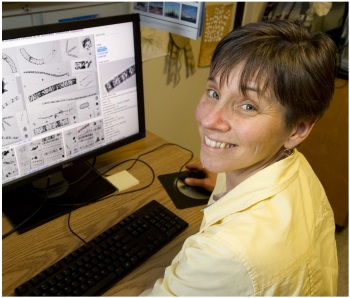
Meeting Abstract
This presentation will highlight vignettes that include parasitoid control of diatom blooms, dynamics of harmful algal blooms that threaten human health, sex and death in the plankton, and climate-related impacts on the phenology of picocyanobacteria. Marine microbial ecosystems are diverse, highly dynamic, and exert major influences on productivity and biogeochemistry across local to global scales. Yet, many aspects of how and why marine plankton communities change through time and space remain poorly understood, in large part because traditional organism-level sampling strategies are not amenable to high frequency, long duration application. The combination of ocean observatories and automated sensors is now addressing this gap and accelerating the pace of discovery. FlowCytobot, a submersible flow cytometer for laser-based particle measurements, and Imaging FlowCytobot, which includes integrated video imaging, are capable of rapid, unattended analysis of individual cells and colonies. Over a decade of high resolution observations in US coastal waters have provided measurements of 100s of millions of cells, which in many cases can be classified to genus or species with automated analysis. These taxon-specific, high resolution records are revealing extraordinary detail about the biology and dynamics of these “unseen” ecosystems.
Biography:  Dr. Heidi Sosik is a biological oceanographer and phytoplankton ecologist. She holds SB and SM Degrees in Civil Engineering from MIT and a PhD in Oceanography from Scripps Institution of Oceanography at the University of California, San Diego. Dr. Sosik was a Postdoctoral Scholar at the Woods Hole Oceanographic Institution (WHOI), where she is currently a Senior Scientist in the Biology Department. Her honors include a Presidential Early Career Award for Scientists and Engineers in 1996 and WHOI’s Senior Scientist Leadership Prize in 2013. Dr. Sosik’s research spans phytoplankton ecology and physiology, optical oceanography and ocean remote sensing, modeling, and instrument development. In recent years, she and co-workers have developed automated underwater cell analyzers that dramatically enhance scientists’ and resource managers’ ability to study microscopic organisms that fuel ocean food chains and sometimes produce harmful algal blooms.
Dr. Heidi Sosik is a biological oceanographer and phytoplankton ecologist. She holds SB and SM Degrees in Civil Engineering from MIT and a PhD in Oceanography from Scripps Institution of Oceanography at the University of California, San Diego. Dr. Sosik was a Postdoctoral Scholar at the Woods Hole Oceanographic Institution (WHOI), where she is currently a Senior Scientist in the Biology Department. Her honors include a Presidential Early Career Award for Scientists and Engineers in 1996 and WHOI’s Senior Scientist Leadership Prize in 2013. Dr. Sosik’s research spans phytoplankton ecology and physiology, optical oceanography and ocean remote sensing, modeling, and instrument development. In recent years, she and co-workers have developed automated underwater cell analyzers that dramatically enhance scientists’ and resource managers’ ability to study microscopic organisms that fuel ocean food chains and sometimes produce harmful algal blooms.

